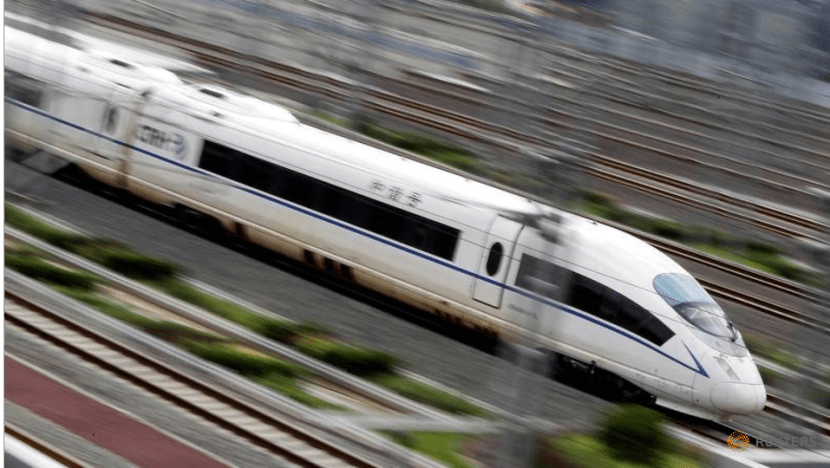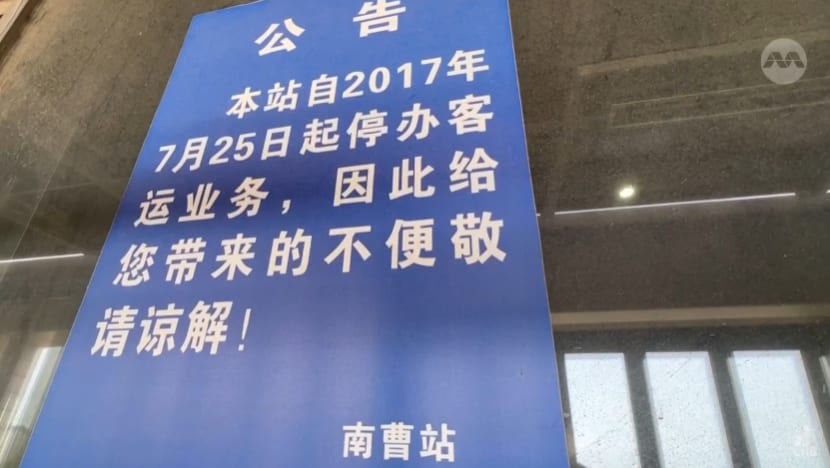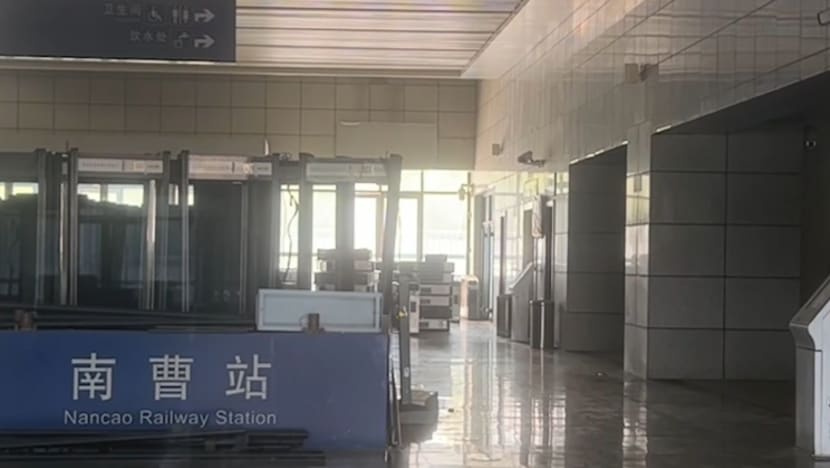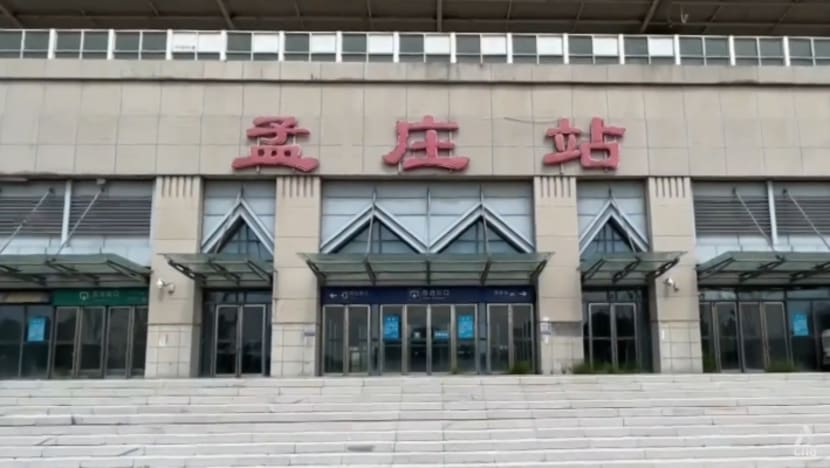'Ghost' railway stations prompt questions on China’s rapid expansion of high-speed network
There are 26 decommissioned high-speed stations scattered across China, abandoned due to their remote locations and low passenger volume.

A China Railway High-speed bullet train runs towards Beijing South Railway Station July 25, 2011. (File Photo: REUTERS/Jason Lee)

This audio is generated by an AI tool.
ZHENGZHOU, Henan: At the Nancao railway station in China's east-central city of Zhengzhou, time appears to stand still.
It has all the facilities of a train station – escalators, security scanners and platforms.
But one thing is missing: Passengers.
All day, doors to the high-speed railway station stay shut. Cobwebs cling at corners. A parade square nearly the size of a football field remains vacant.
Every half hour, the eerie silence is broken by the hiss of a train as it whizzes through at 350kmh.
None of the trains – speeding along the Zhengzhou–Xinzheng Airport intercity railway – stop.

The next station Mengzhuang is also not in use, standing quiet and deserted.
They are among 26 decommissioned high-speed stations scattered across China – most of which are concentrated in the northern and central parts of the country.
Dubbed as “ghost” stations, most were reportedly abandoned after just two years in operation due to their remote locations and low passenger volume.
TOO MUCH, TOO FAST?
By 2035, China aims to expand its railway network to 200,000km, of which 70,000km is high-speed.
But the dozens of decommissioned stations prompt a glaring question – is China expanding its railway network too aggressively?
Economist Dan Wang said it is important to first understand the role of the high-speed network in China’s early days of opening up.
“The high-speed rail was a poster child for China's infrastructure and the so-called ‘Chinese miracle’,” she said, adding the project played a major role in improving the local economy and the welfare of the average Chinese.
However, at the height of infrastructure development and expansion, most cities and counties wanted to be part of the network, regardless they had the ability to support it or not.
“(That) was clearly way above what the market can sustain. As a result, now we're looking at a lot of wasted investments,” she said.
In 2008, China launched its first high-speed track linking its capital Beijing to the neighbouring municipality of Tianjin, some 120km away.
Since then, its network has grown to 45,000km – long enough to circle the planet – with routes connecting every major city like Chongqing and Shenzhen, as well as hundreds of smaller towns.
Its series of ‘Fuxing’ trains are one of the fastest in the world, with speeds of up to 350kmh. There are plans to go even faster next year to speeds of up to 400kmh.
HIT BY DOWNTURN
In 2021, Chinese President Xi Jinping lauded the high-speed rail a success of “independent innovation” and called for greater development.
However, China’s economy experienced a downturn that same year on the back of the COVID-19 pandemic.

New borrowing rules to prevent a housing market bubble from bursting led to a decline in China’s real estate market, which once accounted for 25 per cent of the country’s gross domestic product.
In turn, other infrastructure projects including the high-speed rail network, which relied heavily on local government borrowing and subsidies, were affected.
Fixed asset investment in China’s rail infrastructure in 2022 dropped to about 711 billion yuan (US$100 billion) – an 11 per cent fall compared to pre-COVID levels.
Compounded with low passenger volume during the pandemic, Chinese officials called on local governments to curtail investments in high-speed rail projects.
“The Chinese central government was ready to transfer some of the money but they expected more of the initiative to be at the local level,” said Professor Liu Baocheng, from the University of International Business and Economics.
“There are (also) high probabilities that some of the localities are not very effective and they will be further driven into the debt hole.”
The state-owned operator that runs the rail network, China’s State Railway Group, had total liabilities reaching 5.91 trillion yuan at the end of 2021.
Early this year, China raised bullet train fares at four major high-speed lines as it struggled with debt and high cost, amid a stuttering economy.

WHAT’S NEXT?
Still, Wang, who is chief economist at Hang Seng Bank (China), said she believes the "wasted investment" in the past should not affect future development of the high-speed railway network.
“The key is to choose the productive portions of the high-speed railway network and maintain them, and shut down all those unproductive ones. That’s a more sustainable way,” she told CNA.
However, she added that the move requires local governments to have enough finances, as high-speed rail infrastructure relies on fiscal support.
She added authorities should not view monetary returns as a high priority when it comes to investment in such infrastructure and instead, analyse how improved transport can enhance the lives of local residents.
“The government (has to) calculate the social benefits along with the asset return. Then they can have a more rational or reasonable decision about what the next step should be when it comes to the high-speed railway,” Wang said.
She added she believes high-speed railway infrastructure has the potential to revive the economy, both the locally and regionally.















